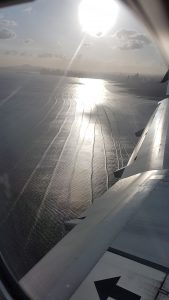
Christina’s #FriendlyWaves from Panama!
Christina writes on Twitter: “#wavewatching from a plane, approaching #Panama. @Meermini, do you know what causes those regular ‘wrinkles’?” and how could I resist writing a blog post about what…
